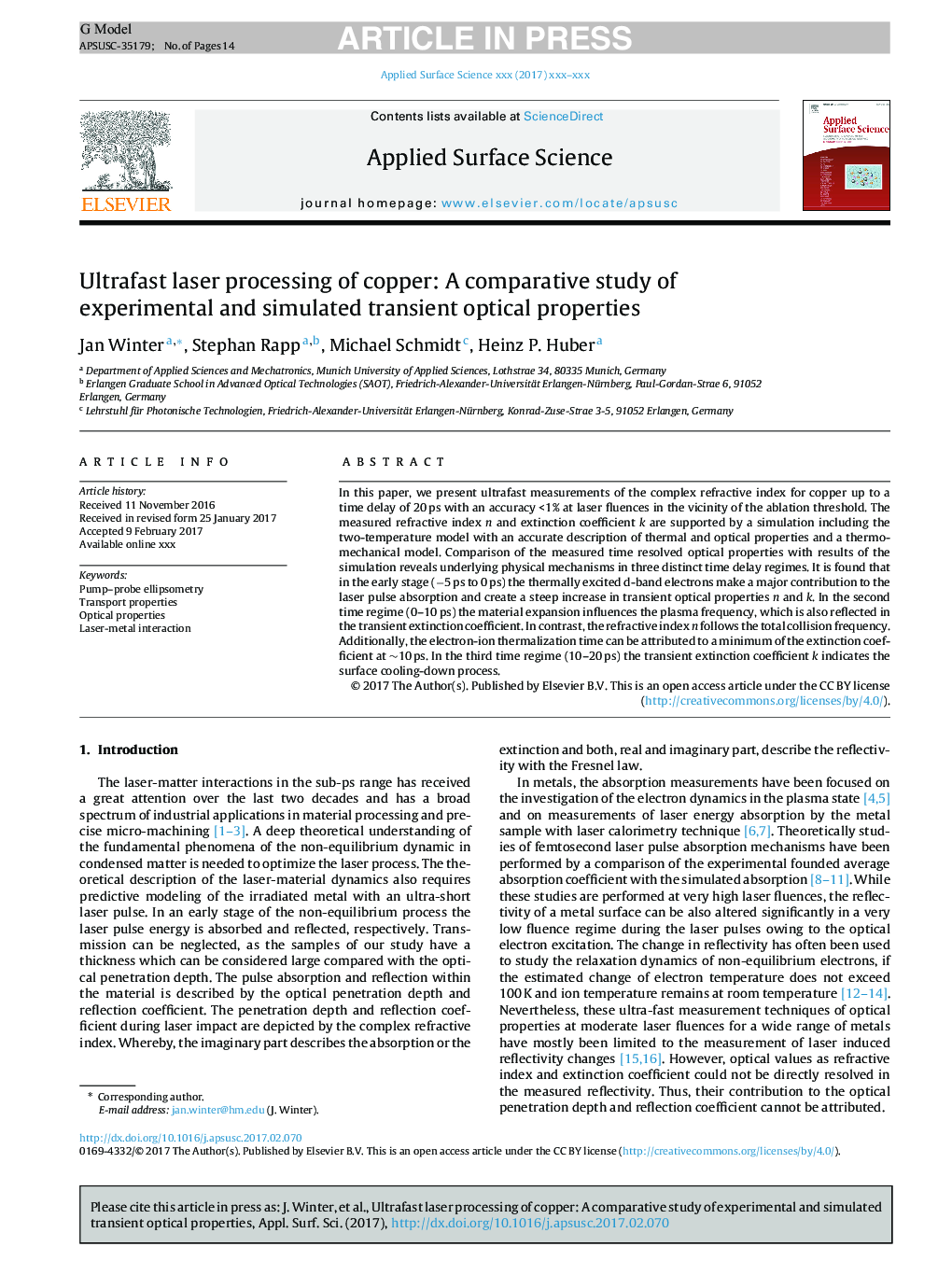| Article ID | Journal | Published Year | Pages | File Type |
|---|---|---|---|---|
| 5350219 | Applied Surface Science | 2017 | 14 Pages |
Abstract
In this paper, we present ultrafast measurements of the complex refractive index for copper up to a time delay of 20Â ps with an accuracy <1% at laser fluences in the vicinity of the ablation threshold. The measured refractive index n and extinction coefficient k are supported by a simulation including the two-temperature model with an accurate description of thermal and optical properties and a thermomechanical model. Comparison of the measured time resolved optical properties with results of the simulation reveals underlying physical mechanisms in three distinct time delay regimes. It is found that in the early stage (â5Â ps to 0Â ps) the thermally excited d-band electrons make a major contribution to the laser pulse absorption and create a steep increase in transient optical properties n and k. In the second time regime (0-10Â ps) the material expansion influences the plasma frequency, which is also reflected in the transient extinction coefficient. In contrast, the refractive index n follows the total collision frequency. Additionally, the electron-ion thermalization time can be attributed to a minimum of the extinction coefficient at â¼10Â ps. In the third time regime (10-20Â ps) the transient extinction coefficient k indicates the surface cooling-down process.
Related Topics
Physical Sciences and Engineering
Chemistry
Physical and Theoretical Chemistry
Authors
Jan Winter, Stephan Rapp, Michael Schmidt, Heinz P. Huber,
